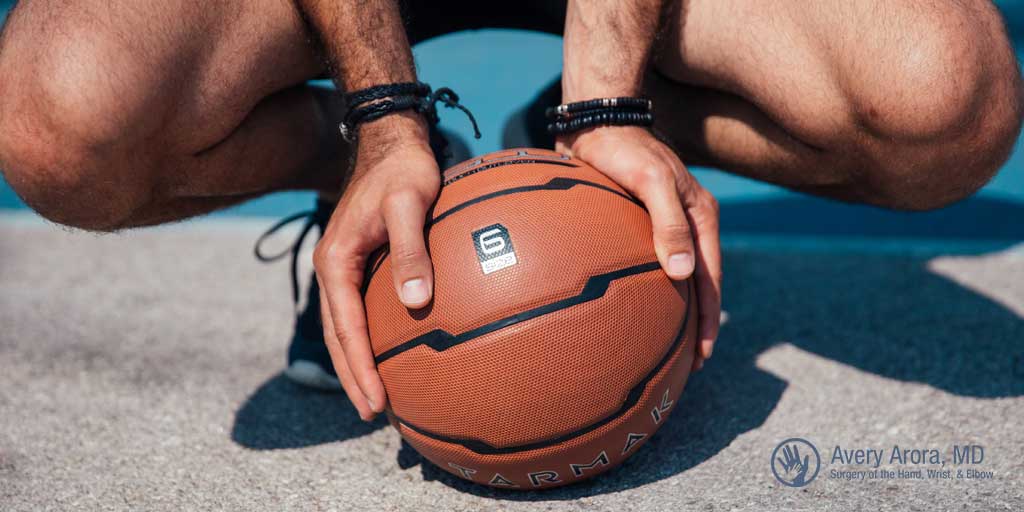The swish of a perfect basketball shot is a classic sound during hot summer days. From youths to adults, most everyone enjoys a game of basketball. Whether your hoop of choice is in the park or over the garage, you want to focus on improving your game this season while having fun. Naturally, you may be concerned about possible twisted ankles or concussions. However, basketball injuries involving your arm, elbow, wrist, and hand are also common, as well as preventable and treatable.
Common Arm and Hand Basketball Injuries
As with any sport, basketball injuries can and will occur, especially with your hands, elbows, wrists, and hands. Unfortunately, basketball injuries can get in the way of developing your technique.
You see more arm, hand and finger injuries in contact sports like basketball. Catching the ball incorrectly can bend your fingers unnaturally and cause injuries in other areas. Collisions during offensive and defensive plays also cause mild, moderate, and serious injuries.
Here are a few common arm and hand basketball injuries and how to treat them.
1. Bruises
You receive a bruise due to a collision with another player or a direct blow by the ball or another object. A bruise that takes too long to fade can indicate a more serious injury.
You can use the R.I.C.E. method to treat many injuries, especially bruises and swelling. Rest the area. Ice it every two hours, for 20 minutes total. Apply compression, such as an Ace bandage, to reduce the swelling. Elevate the area over the heart.
2. Shoulder Injuries
The repetitive motions associated with shooting from the socket can lead to shoulder injuries of the ligaments, tendons, and muscles therein. You may inflame the tendon or tear a rotator cuff. Overuse can lead to both, but an acute injury can also lead to tears. R.I.C.E. can help with the swelling, but tears need medical attention, such as cortisone injections.
3. Jammed Fingers
It’s common to jam a finger when playing basketball. Soak the injury in cold water for at least 20 minutes. Protect your jammed finger from further damage by “buddy taping” it to the next finger with medical tape.
4. Muscle strains
You can strain a muscle due to lack of flexibility or overuse. For overuse, try light stretching. You may also see an indent, bruising, and swelling, so it’s best to treat these injuries with the R.I.C.E. method.
5. Wrist Sprains
Many mild to moderate wrist sprains may be treated similarly to an ankle sprain with home remedies, but you should still pay us a visit for proper analysis. The ligaments may only be minorly damaged. However, they could also be torn and causing severe pain.
Try resting your wrist for 48 hours, and over-the-counter anti-inflammatory medicine may help. Consult with your doctor before taking any medications.
If the pain persists, you may have a more serious tear or a broken wrist. In the case of fractures or dislocations, do visit our offices to allow us to properly diagnose your case. An injury may seem minor, but the degree of pain and its longevity may worry you. Don’t hide an injury, or your injury may require surgery down the road due to lack of proper treatment.
Prevention is Key
A good coach is key to learning proper techniques with shooting, dribbling, passing, offense, and defense. Aside from practice, you should always take preventative measures against basketball injuries by stretching before you go out on the court.
Taking just five minutes of your time to warm-up each time you play may keep you playing all summer and help prevent injury.
Contact us at Dr. Avery Arora’s offices in West Bloomfield, Howell, Warren, or Macomb Township for assistance with any injuries regarding your arm, wrist, or hand.














